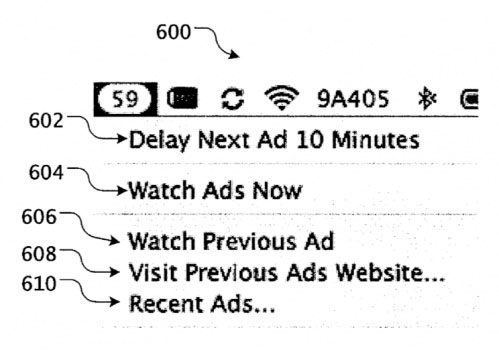media

Small children (age 4-6) who were exposed to a large number of children’s books and films had a significantly stronger ability to read the mental and emotional states of other people. … The more absorbed subjects were in the story, the more empathy they felt, and the more empathy they felt, the more likely the subjects were to help when the experimenter “accidentally” dropped a handful of pens… Reading narrative fiction … fosters empathic growth and prosocial behavior. […]
Psychologists have found that people who watch less TV are actually more accurate judges of life’s risks and rewards than those who subject themselves to the tales of crime, tragedy, and death that appear night after night on the ten o’clock news. That’s because these people are less likely to see sensationalized or one-sided sources of information, and thus see reality more clearly.
{ OvercomingBias | Continue reading }
image { Gary Stephen Brotmeyer }
books, ideas, media, psychology | May 11th, 2012 12:06 pm
We’ve been told by the New York Times, you know, the newswpaper of record, that Apple only paid a 9.8% tax rate last year.
As it stands, the company paid cash taxes of $3.3 billion around the world on its reported profits of $34.2 billion last year, a tax rate of 9.8 percent.
This really is the most gargantuan ignorance on their part.
The $3.3 billion has nothing, nothing at all, to do with the $34.2 billion: something which any accountant at all could have told them.
{ Forbes | Continue reading }
related { For every $1 Google spends lobbying, Apple spends 10¢ }
U.S., economics, press, technology | May 10th, 2012 3:00 pm
press | May 10th, 2012 9:34 am
Adscend Media agreed not to spam Facebook users and pay US$100,000 in court and attorney fees, according to the settlement. […] Adscend Media’s spamming generated up to $20 million a year.
{ IT World | Continue reading }
economics, law, marketing, scams and heists, social networks | May 8th, 2012 9:38 am

To justify its sky-high valuation, Facebook will have to increase its profit per user at rates that seem unlikely, even by the most generous predictions. Last year, we looked at just how unlikely this is.
The issue that concerns many Facebook users is this. The company is set to profit from selling user data but the users whose data is being traded do not get paid at all. That seems unfair.
Today, Bernardo Huberman and Christina Aperjis at HP Labs in Palo Alto, say there is an alternative. Why not pay individuals for their data? (…)
If buyers choose only the cheapest data, the sample will be biased in favour of those who price their data cheaply. And if buyers pay everyone the highest price, they will be overpaying.
{ The Physics arXiv Blog | Continue reading }
drawing { Tracey Emin, Sad Shower in New York, 1995 }
economics, marketing, social networks | May 3rd, 2012 8:01 am

{ Back in late 2009, an Apple patent application surfaced showing that the company had explored ad-supported operating systems, with the user receiving free or discounted goods or services in exchange for viewing the advertisements. | MacRumors | Continue reading }
marketing, technology | April 26th, 2012 1:37 pm

Electronic dissemination of written news already substitutes for the delivery of some print newspapers. With the advent of electronic readers (“e-readers”) and tablet computers, the shift from print to electronic dissemination appears set to accelerate.Paper manufacturing, printing, and newspaper distribution release substantial amounts of greenhouse gas (GHG). The frequency and volume of newspapers makes them particularly energy intensive. We estimate that, in the United States, one newspaper subscription releases 94.7 kg of carbon dioxide annually, for production, printing, and delivery. (…)
In contrast, the production and operation of a single e-reader or tablet computer generates far fewer GHG emissions, assuming that emissions pro- duced during the manufacture of these devices are spread out over a three-year product life span. (…)
We calculated potential reductions by disseminating written news with e-readers rather than newspapers in a “what-if” scenario (that is, what if each current newspaper subscription were replaced today with an e-reader or tablet computer). Adopting e-readers could reduce greenhouse gas (GHG) emissions from publishing and distributing newspapers by 74 percent.
{ RAND | PDF }
photo { Adam Bartos }
economics, media, technology | April 22nd, 2012 8:22 am

Pew research has a new survey showing that tablets and smart phones are now 27% of Americans’ primary news source. The overwhelming share of this is phones, not tablets; and a reasonable view says this will rise to 50% in three years. (…)
But it is also a depressing development, portending, once again, the end of the world as we know it: the news business has been plunged into a crisis because web advertising dollars are a fraction of old media money. And mobile is now a fraction of web: the approximate conversion rate is $100 offline = $10 on the web = $1 in mobile.
{ Guardian | Continue reading }
marketing, media, technology | April 13th, 2012 6:58 am

Right before its billion dollar acquisition from Facebook, Instagram closed a $50 million Series B round from Sequoia, Josh Kushner’s Thrive Capital, Greylock and Benchmark at a $500 million valuation.
{ TechCrunch | Continue reading }
This will make you think: at its current, public market valuation, the New York Times company is worth about $50 million less than the $1 billion dollars that Facebook just paid for Instagram. (…) They could have bought the New York Times, and used the spare to fund Instagram’s entire last round.
{ The Next Web | Continue reading | Thanks Tim }
oil on canvas { Brendan Lott }
economics, media, technology | April 12th, 2012 7:00 am

Some of the memories that stick with me from that era:
—Our top account executive was sleeping with a creative director, a copywriter (not me), an account supervisor, and, I believe, the married CEO of the firm, all at the same time. She later became president of the agency.
—After 5pm, said CEO would walk around the office rambling about “big ideas” while smoking a fat joint laced with cocaine and who knows what else. (He’s been dead for five years). Often accompanying him on the tours was his best friend, a boxer/mob hitman with hair plugs, who casually told us about his kills.
—Our New Business guy, not the sharpest X-Acto knife in the drawer, got us in a lot of doors. He then died of a cocaine overdose in the CEO’s pied-à-terre fuckpad.
{ Copyranter/Buzzfeed | Continue reading }
artwork { David Mann }
experience, flashback, marketing, new york | April 3rd, 2012 7:12 am

{ Barneys New York logo by Chermayeff & Geismar | “Barney’s” was a long-established New York institution known for medium-priced clothing for men and boys. When the ownership decided to upgrade to a high-fashion, high-priced emporium for women’s as well as men’s wear, an elegant new logo was developed. By eliminating the apostrophe, adding the words New York, and using a classic typestyle, the store’s graphic and verbal identity was transformed. | Chermayeff & Geismar | more }
marketing, new york, visual design | March 23rd, 2012 10:00 am

Research has demonstrated that the most popular and most trusted US news network may actually leave viewers both less informed and even more misinformed than people who watch no TV news at all.
{ Neurobonkers | Continue reading }
ideas, media | March 15th, 2012 8:00 am

Many academics are excited about the future of instant distribution of research. Right now the time lag between finishing a paper, and the relevant worldwide research community seeing it, is between 6 months and 2 years. This is because during that time, the paper is being peer reviewed, and peer review takes an incredibly long time. 2 years is roughly how long it used to take to send a letter abroad 300 years ago.
Many platforms are springing up which enable research distribution to be instant, so that the time lag between finishing a paper, and everyone in the relevant research community worldwide seeing it, is measured in hours and days, rather than months and years. Some of the strong platforms are Academia.edu, arXiv, Mendeley, ResearchGate and SSRN.
{ Richard Price/TechCrunch | Continue reading }
embroidery { Isabelle Boinot }
media, science | February 13th, 2012 12:20 pm

{ The New Inquiry Magazine, a monthly collection of essays and featured content, organized around a common theme and illustrated by Imp Kerr | Read more | Subscribe }
press, visual design | February 6th, 2012 4:37 pm

Facebook’s inventory of data and its revenue from advertising are small potatoes compared to some others. Google took in more than 10 times as much, with an estimated $36.5 billion in advertising revenue in 2011, by analyzing what people sent over Gmail and what they searched on the Web, and then using that data to sell ads. Hundreds of other companies have also staked claims on people’s online data by depositing software called cookies or other tracking mechanisms on people’s computers and in their browsers. If you’ve mentioned anxiety in an e-mail, done a Google search for “stress” or started using an online medical diary that lets you monitor your mood, expect ads for medications and services to treat your anxiety.
Ads that pop up on your screen might seem useful, or at worst, a nuisance. But they are much more than that. The bits and bytes about your life can easily be used against you. Whether you can obtain a job, credit or insurance can be based on your digital doppelgänger — and you may never know why you’ve been turned down.
Material mined online has been used against people battling for child custody or defending themselves in criminal cases. LexisNexis has a product called Accurint for Law Enforcement, which gives government agents information about what people do on social networks. The Internal Revenue Service searches Facebook and MySpace for evidence of tax evaders’ income and whereabouts, and United States Citizenship and Immigration Services has been known to scrutinize photos and posts to confirm family relationships or weed out sham marriages. Employers sometimes decide whether to hire people based on their online profiles, with one study indicating that 70 percent of recruiters and human resource professionals in the United States have rejected candidates based on data found online. A company called Spokeo gathers online data for employers, the public and anyone else who wants it. The company even posts ads urging “HR Recruiters — Click Here Now!” and asking women to submit their boyfriends’ e-mail addresses for an analysis of their online photos and activities to learn “Is He Cheating on You?”
Stereotyping is alive and well in data aggregation. Your application for credit could be declined not on the basis of your own finances or credit history, but on the basis of aggregate data — what other people whose likes and dislikes are similar to yours have done. If guitar players or divorcing couples are more likely to renege on their credit-card bills, then the fact that you’ve looked at guitar ads or sent an e-mail to a divorce lawyer might cause a data aggregator to classify you as less credit-worthy. When an Atlanta man returned from his honeymoon, he found that his credit limit had been lowered to $3,800 from $10,800. The switch was not based on anything he had done but on aggregate data. A letter from the company told him, “Other customers who have used their card at establishments where you recently shopped have a poor repayment history with American Express.” (…)
In 2007 and 2008, the online advertising company NebuAd contracted with six Internet service providers to install hardware on their networks that monitored users’ Internet activities and transmitted that data to NebuAd’s servers for analysis and use in marketing. For an average of six months, NebuAd copied every e-mail, Web search or purchase that some 400,000 people sent over the Internet.
{ NY Times | Continue reading }
economics, marketing, spy & security, technology | February 6th, 2012 3:51 pm

Another time I bought security footage of these killers. Before they went out to basically kill people, they went to a Popeyes Chicken. I went to that location and let’s just say I bought $1000 worth of chicken. […]
This aggregation thing, it’s a bad ethos. If people are not producing original journalism, why should people pay attention? Overtime, they won’t. But by then the real institutions are going to be gone, and you just don’t build those overnight. Everyone’s going to be locked into these aggregators until they get bored and realize they don’t serve their interest, and they’re going to look around for the real newspapers and the real newsmakers, and they’re not going to be there anymore.
{ Kerry Burke/The Awl | Continue reading }
artwork { Berni Searle }
experience, media | January 26th, 2012 4:11 pm
animals, marketing, visual design | January 23rd, 2012 12:02 pm
housing, marketing | January 17th, 2012 12:15 pm

In its 1915 decision in Mutual Film v. Industrial Commission of Ohio, the Supreme Court held that motion pictures were, as a medium, unprotected by freedom of speech and press because they were mere “entertainment” and “spectacles” with a “capacity for evil.” Mutual legitimated an extensive regime of film censorship that existed until the 1950s. It was not until 1952, in Burstyn v. Wilson, that the Court declared motion pictures to be, like the traditional press, an important medium for the communication of ideas protected by the First Amendment. By the middle of the next decade, film censorship in the U.S. had been almost entirely abolished.
Why did the Court go from regarding the cinema as an unprotected medium to part of the constitutionally-protected “press”? The standard explanation for this shift is that civil libertarian developments in free speech jurisprudence in the 1930s and 40s made the changed First Amendment status of the movies and the fall of film censorship inevitable. Challenging this account, I argue that the shift was also the result of a dynamic I describe as the social convergence of mass communications. Social convergence takes place when the functions, practices, and cultures associated with different media come to resemble each other. By the 1950s, movies occupied a role in American culture that increasingly resembled the traditional press. At the same time, print journalism took on styles and functions that were like those historically associated with the movies. The demise of film censorship reflected not only more capacious understandings of freedom of expression, but also convergent communications. The article focuses on the efforts of a nationwide anticensorship movement, between 1915 and the 1950s, to engineer the reversal of Mutual using an argument based on media convergence.
This significant, lost chapter in the history of modern free speech has much to tell us about the ongoing relationship between the First Amendment and new media. It illustrates how courts and the public in an earlier time dealt with a question that is still pressing today: should the medium of communication have significance for free speech law? Illuminating historical patterns of judicial responses to new media, the work offers insights into what we may predict about the regulation of mass media in our own era of media convergence.
{ Samantha Barbas/SSRN | Continue reading }
law, media, showbiz | January 8th, 2012 12:04 pm
buffoons, haha, marketing | January 8th, 2012 11:18 am




















